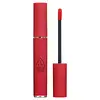What's inside
What's inside
 Key Ingredients
Key Ingredients

 Benefits
Benefits

 Concerns
Concerns

 Ingredients Side-by-side
Ingredients Side-by-side

Dimethicone
EmollientPhenyl Trimethicone
Skin ConditioningCyclopentasiloxane
EmollientPolysilicone-11
Dimethicone/Vinyl Dimethicone Crosspolymer
Skin ConditioningDimethicone/Polyglycerin-3 Crosspolymer
CleansingPolyglyceryl-2 Triisostearate
EmulsifyingHydrogenated Polyisobutene
EmollientDimethicone Crosspolymer
Emulsion StabilisingCI 77891
Cosmetic ColorantCI 77492
Cosmetic ColorantPolyhydroxystearic Acid
EmulsifyingCI 77491
Cosmetic ColorantCI 19140
Cosmetic ColorantLecithin
EmollientSilica
AbrasiveEthylhexyl Palmitate
EmollientIsostearic Acid
CleansingIsopropyl Myristate
EmollientCI 15850
Cosmetic ColorantPolyglyceryl-3 Polyricinoleate
EmulsifyingDipropylene Glycol
HumectantParfum
MaskingCI 77499
Cosmetic ColorantTriethoxycaprylylsilane
Aluminum Hydroxide
EmollientSodium Citrate
BufferingTocopherol
AntioxidantDimethicone, Phenyl Trimethicone, Cyclopentasiloxane, Polysilicone-11, Dimethicone/Vinyl Dimethicone Crosspolymer, Dimethicone/Polyglycerin-3 Crosspolymer, Polyglyceryl-2 Triisostearate, Hydrogenated Polyisobutene, Dimethicone Crosspolymer, CI 77891, CI 77492, Polyhydroxystearic Acid, CI 77491, CI 19140, Lecithin, Silica, Ethylhexyl Palmitate, Isostearic Acid, Isopropyl Myristate, CI 15850, Polyglyceryl-3 Polyricinoleate, Dipropylene Glycol, Parfum, CI 77499, Triethoxycaprylylsilane, Aluminum Hydroxide, Sodium Citrate, Tocopherol
Dimethicone
EmollientCyclopentasiloxane
EmollientDimethicone Crosspolymer
Emulsion StabilisingDimethicone/Vinyl Dimethicone Crosspolymer
Skin ConditioningPolyglyceryl-2 Triisostearate
EmulsifyingIsododecane
EmollientCI 45410
Cosmetic ColorantCyclohexasiloxane
EmollientCI 15985
Cosmetic Colorant1,2-Hexanediol
Skin ConditioningDisteardimonium Hectorite
StabilisingPhenoxyethanol
PreservativeParfum
MaskingPEG-10 Dimethicone
Skin ConditioningTocopheryl Acetate
AntioxidantPropylene Carbonate
SolventCaprylic/Capric Triglyceride
MaskingHelianthus Annuus Seed Oil
EmollientCalendula Officinalis Flower Oil
MaskingRosa Canina Fruit Extract
AstringentRose Extract
Skin ConditioningDimethicone, Cyclopentasiloxane, Dimethicone Crosspolymer, Dimethicone/Vinyl Dimethicone Crosspolymer, Polyglyceryl-2 Triisostearate, Isododecane, CI 45410, Cyclohexasiloxane, CI 15985, 1,2-Hexanediol, Disteardimonium Hectorite, Phenoxyethanol, Parfum, PEG-10 Dimethicone, Tocopheryl Acetate, Propylene Carbonate, Caprylic/Capric Triglyceride, Helianthus Annuus Seed Oil, Calendula Officinalis Flower Oil, Rosa Canina Fruit Extract, Rose Extract
Ingredients Explained
These ingredients are found in both products.
Ingredients higher up in an ingredient list are typically present in a larger amount.
Cyclopentasiloxane, or D5, is a silicone used to improve texture of products and trap moisture.
D5 is considered lightweight and volatile. Volatile means it evaporates quickly after application. Once evaporated, D5 leaves a thin barrier that helps keep skin hydrated.
It is also an emollient. Emollients help soften the skin and prevent water loss. Silicones create a silky texture in products. D5 helps other ingredients become more spreadable.
Studies show D5 is safe to use in skincare products. We recommend speaking with a skincare professional if you have concerns.
Learn more about CyclopentasiloxaneDimethicone is a type of synthetic silicone created from natural materials such as quartz.
What it does:
Dimethicone comes in different viscosities:
Depending on the viscosity, dimethicone has different properties.
Ingredients lists don't always show which type is used, so we recommend reaching out to the brand if you have questions about the viscosity.
This ingredient is unlikely to cause irritation because it does not get absorbed into skin. However, people with silicone allergies should be careful about using this ingredient.
Note: Dimethicone may contribute to pilling. This is because it is not oil or water soluble, so pilling may occur when layered with products. When mixed with heavy oils in a formula, the outcome is also quite greasy.
Learn more about DimethiconeDimethicone Crosspolymer is a silicone created by modifying dimethicone with hydrocarbon side chains. Due to its large size, it does not penetrate skin. It is considered non-occlusive.
Dimethicone Crosspolymer is used to stabilize and thicken products. It also helps give products a silky feel.
This ingredient is a silicone used to improve the texture of products and absorb oil. It does not get absorbed into the skin.
Like other silicones, Dimethicone/Vinyl Dimethicone Crosspolymer helps condition the skin by creating a barrier. In this sense, it can act as an emollient and trap moisture in.
This ingredient is a type of elastomer.
Learn more about Dimethicone/Vinyl Dimethicone CrosspolymerParfum is a catch-all term for an ingredient or more that is used to give a scent to products.
Also called "fragrance", this ingredient can be a blend of hundreds of chemicals or plant oils. This means every product with "fragrance" or "parfum" in the ingredients list is a different mixture.
For instance, Habanolide is a proprietary trade name for a specific aroma chemical. When used as a fragrance ingredient in cosmetics, most aroma chemicals fall under the broad labeling category of “FRAGRANCE” or “PARFUM” according to EU and US regulations.
The term 'parfum' or 'fragrance' is not regulated in many countries. In many cases, it is up to the brand to define this term.
For instance, many brands choose to label themselves as "fragrance-free" because they are not using synthetic fragrances. However, their products may still contain ingredients such as essential oils that are considered a fragrance by INCI standards.
One example is Calendula flower extract. Calendula is an essential oil that still imparts a scent or 'fragrance'.
Depending on the blend, the ingredients in the mixture can cause allergies and sensitivities on the skin. Some ingredients that are known EU allergens include linalool and citronellol.
Parfum can also be used to mask or cover an unpleasant scent.
The bottom line is: not all fragrances/parfum/ingredients are created equally. If you are worried about fragrances, we recommend taking a closer look at an ingredient. And of course, we always recommend speaking with a professional.
Learn more about ParfumThis ingredient is a form of glycerin with emulsifying and emollient properties.
As an emulsifier, this ingredient helps keep products together while adding a thick texture. The manufacturer states this ingredient has emollient properties. Emollients help keep the skin hydrated by trapping moisture in.
Polyglyceryl-2 Triisostearate is created by reacting diglycerin and isostearic acid. Due to the isostearic acid base, it may not be safe for Malassezia or fungal acne.
Learn more about Polyglyceryl-2 Triisostearate